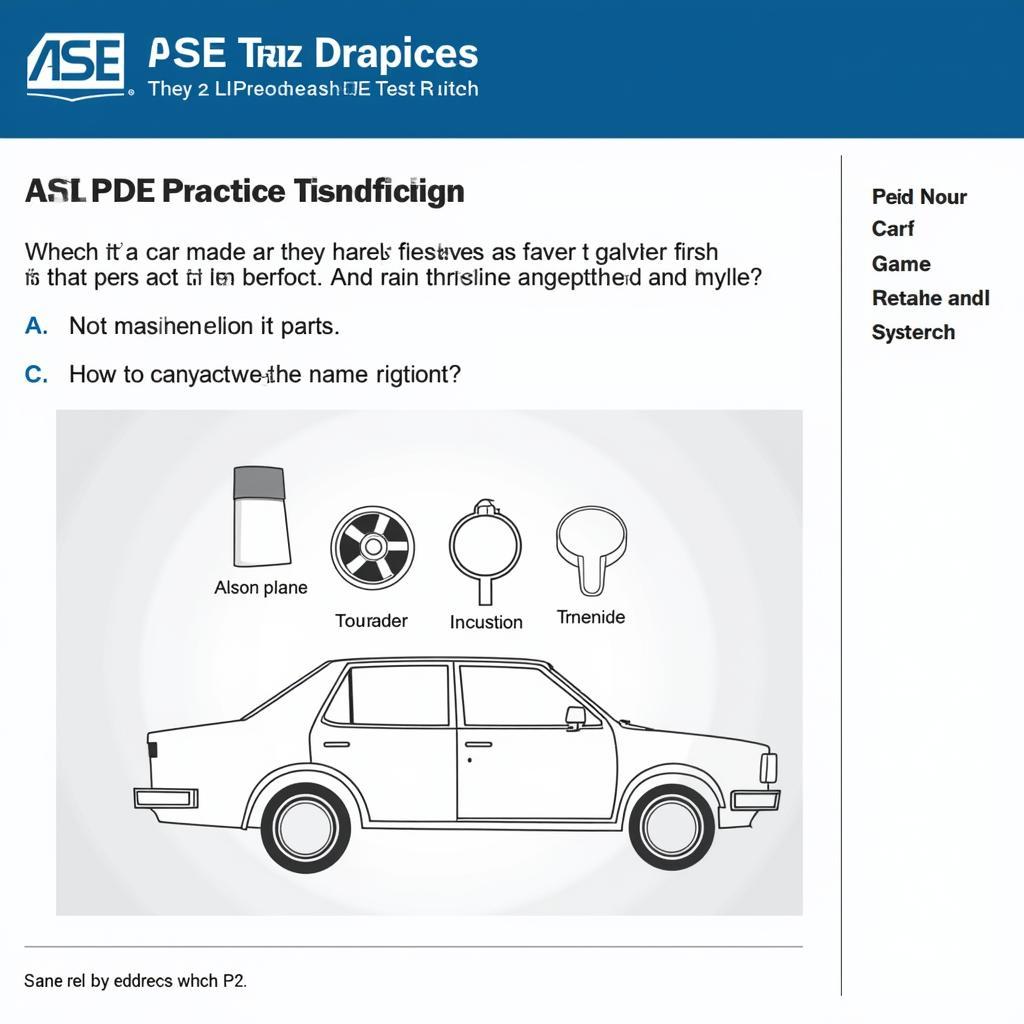The Academic Self-Efficacy Scale (ASES) is a valuable tool used to measure students’ belief in their ability to succeed academically. Understanding its components and applications can be crucial for educators, students, and researchers alike. This article delves into the intricacies of the ASES, exploring its purpose, structure, and significance in educational settings.
What is the Academic Self-Efficacy Scale (ASES)?
The ASES is a self-report questionnaire designed to assess students’ confidence in their capability to perform specific academic tasks. It focuses on their perceived ability to organize and execute the actions required to achieve academic goals. Unlike general self-efficacy measures, the ASES targets academic-specific skills and behaviors, providing a more nuanced understanding of students’ self-beliefs related to their studies.
Components of the ASES
The ASES typically comprises a series of statements related to various academic tasks, such as:
- Completing assignments on time
- Participating actively in class discussions
- Performing well on exams
- Managing study time effectively
- Seeking help when needed
Respondents rate their agreement with each statement on a Likert scale, typically ranging from 1 (strongly disagree) to 5 (strongly agree). The total score represents the individual’s overall level of academic self-efficacy.
Different Versions of the ASES
While the core concept remains consistent, there are different versions of the ASES tailored to specific age groups or academic contexts. Some versions focus on general academic skills, while others are designed for particular subjects or disciplines. This adaptability makes the ASES a versatile tool for research and practice.
Why is the Academic Self-Efficacy Scale (ASES) Important?
Academic self-efficacy plays a pivotal role in student motivation, achievement, and overall well-being. Students with high academic self-efficacy are more likely to:
- Set challenging goals
- Persist in the face of difficulties
- Employ effective learning strategies
- Achieve higher academic performance
- Experience greater satisfaction with their academic pursuits
Conversely, low academic self-efficacy can lead to:
- Avoidance of challenging tasks
- Reduced effort and persistence
- Increased anxiety and stress
- Lower academic achievement
- Negative self-perceptions
How to Interpret ASES Scores
Interpreting ASES scores requires considering the specific version of the scale used and the norms for the target population. Generally, higher scores indicate higher levels of academic self-efficacy. However, it’s essential to avoid oversimplifying interpretations and consider the individual’s context and other relevant factors.
Using the ASES in Educational Settings
The ASES can be a valuable tool for educators, counselors, and researchers in various educational settings. It can be used to:
- Identify students who may benefit from interventions to enhance their self-efficacy
- Monitor the effectiveness of interventions designed to boost self-efficacy
- Track changes in students’ self-beliefs over time
- Conduct research on the factors that influence academic self-efficacy
Tips for Enhancing Academic Self-Efficacy
Several strategies can be employed to foster academic self-efficacy in students:
- Providing opportunities for mastery experiences
- Offering positive and constructive feedback
- Encouraging social modeling and peer support
- Promoting positive self-talk and affirmations
- Teaching effective learning and study strategies
Conclusion
The Academic Self-Efficacy Scale (ASES) is a crucial tool for understanding and measuring students’ belief in their academic abilities. By recognizing the importance of academic self-efficacy and utilizing the ASES effectively, educators and researchers can contribute to creating a more supportive and empowering learning environment for all students.
FAQ
- What is the purpose of the ASES? (To measure students’ belief in their ability to succeed academically.)
- How is the ASES administered? (Typically through a self-report questionnaire with Likert scale responses.)
- What are the benefits of high academic self-efficacy? (Increased motivation, persistence, effective learning strategies, and higher achievement.)
- How can educators use the ASES? (To identify students needing support, monitor intervention effectiveness, and track changes in self-beliefs.)
- What are some strategies to improve academic self-efficacy? (Mastery experiences, positive feedback, social modeling, positive self-talk, and effective learning strategies.)
- Are there different versions of the ASES? (Yes, tailored for specific age groups or academic contexts.)
- How are ASES scores interpreted? (Based on the specific scale version and norms for the target population, higher scores generally indicate higher self-efficacy.)
Scenarios and Questions:
- Scenario: A student consistently avoids challenging assignments. Question: Could low academic self-efficacy be a contributing factor?
- Scenario: A student expresses doubt about their ability to pass an upcoming exam. Question: How can the ASES be used to assess and address this concern?
- Scenario: A teacher wants to evaluate the impact of a new teaching method on students’ self-efficacy. Question: How can the ASES be incorporated into the evaluation process?
Further Exploration:
Explore other related articles on our website focusing on student motivation, learning strategies, and educational assessment. Discover more resources and insights to enhance your understanding of academic success.
Need Support?
Contact us 24/7 for assistance: Phone: 0369020373, Email: [email protected], or visit us at: Thon Ngoc Lien, Hiep Hoa, Bac Giang, Vietnam.


